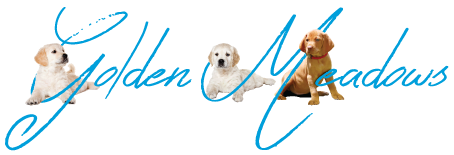Golden Retriever puppies are full of energy, and with that comes their desire to bite and chew everything with their razor-sharp teeth. You may be wondering when your new best friend will stop biting everything in sight, but they usually won’t. Goldens are natural-born chewers. However, you can teach them to chew on their toys instead of your ankles, and they will also go through a phase where their super sharp puppy teeth will be replaced with adult canine teeth.
Like all puppies, Golden Retrievers have pointy “milk teeth” that will eventually fall out and be replaced with slightly less-sharp adult molars. The average age of when a puppy will lose their teeth varies among dog breeds. Here’s the timeline you can expect your Golden Retriever puppy to follow in their early development.
Golden Retriever Puppy Growth and Development
Golden Retriever puppies are usually ready to go home with you when they are between 8-12 weeks old. This period is when the puppy can be weaned off their mother’s milk and start eating dog food. Their puppy teeth, also called “milk teeth,” come in at around three weeks, so your puppy should have their entire first set of teeth by the time they become a part of your family.
Next, your puppy will start going through its teething phase. A Golden Retriever that’s teething will start chewing anything and everything around the house to try to ease the pain and discomfort of their new adult teeth growing in. Soon after the teething starts, your puppy will begin losing their puppy teeth.
When Do Golden Retrievers Stop Teething?
At around four months old, a Golden Retriever puppy’s teeth will start falling out. Though this process varies with each dog, Golden Retrievers continue teething until all their new adult teeth have grown in at around six months old. Your puppy’s 28 razor-sharp teeth will be replaced with 42 adult canine teeth. These new teeth are permanent, and your dog should have them for the rest of its life.
The Various Types of Golden Retriever Teeth
Of the 42 new teeth, six of them will be incisors, which are the small teeth located in the front of your dog’s mouth between their larger fang-like canine teeth. Behind the canine teeth, your Golden will have small pre-molars meant for tearing. In the back are the large molars meant for grinding. These new adult canine teeth will make it easier for your dog to eat tougher or crunchier dog foods and treats.
Learn More About Golden Retriever Development
Now that you know what to expect for a Golden Retriever’s early development and teething phases, are you ready to adopt your new best friend? Goldens are great family pets with their gentle temperament and lifelong loyalty. We are also proud that several of our puppies have grown up to be therapy and service dogs. Contact Golden Meadows Retrievers to learn more about adopting a purebred Golden Retriever puppy!

